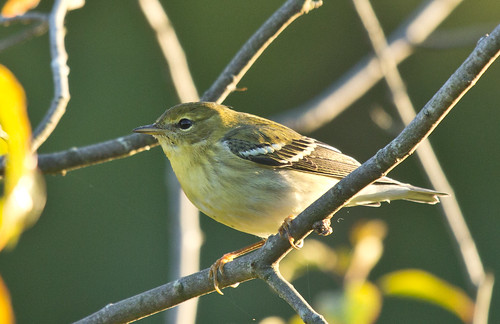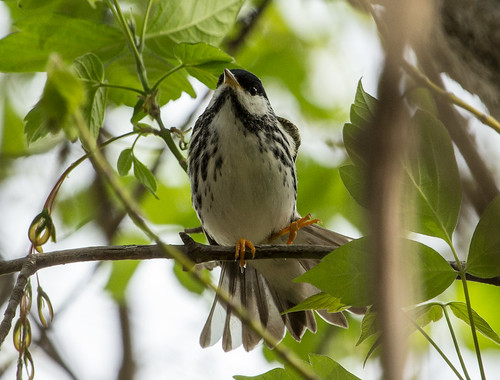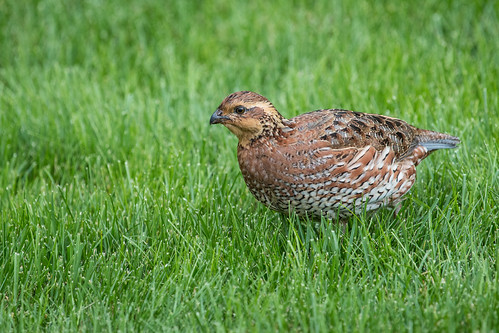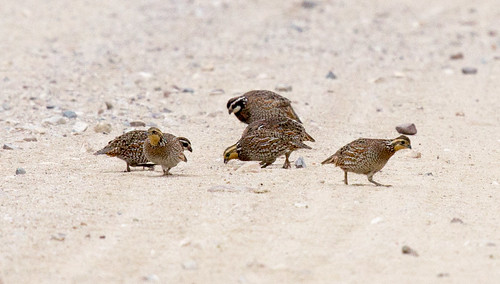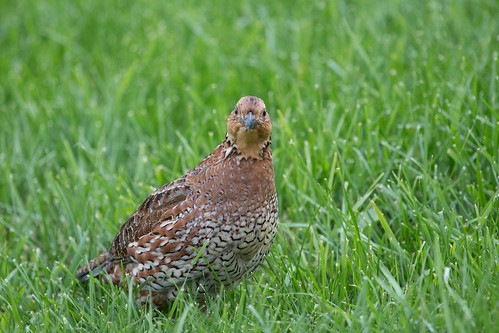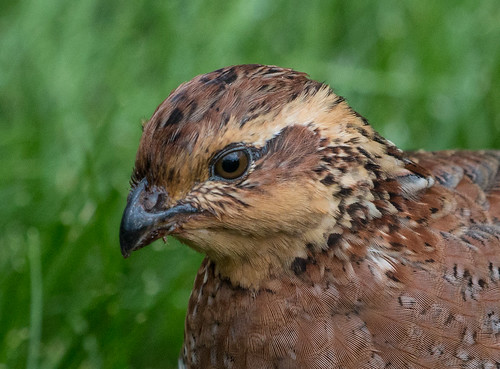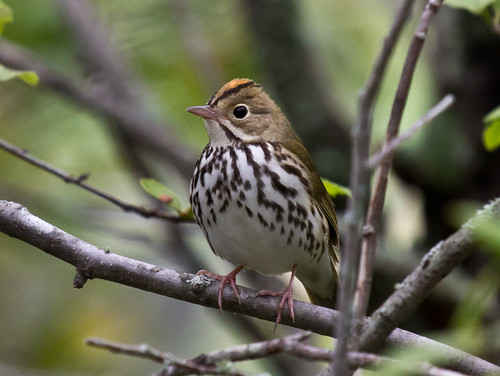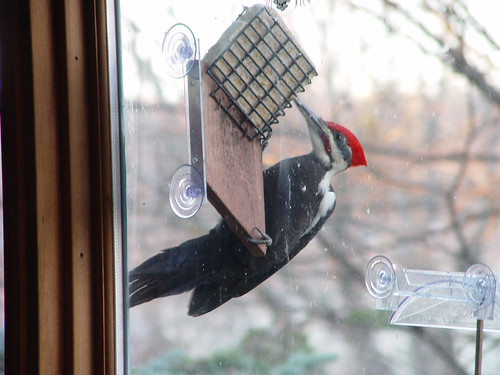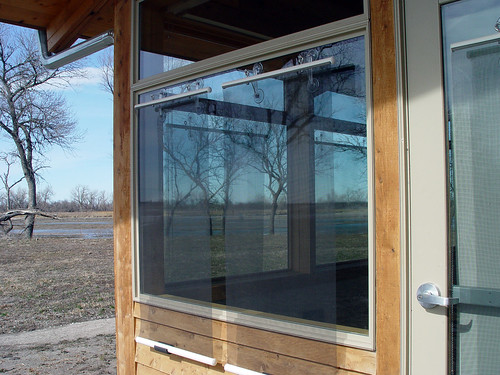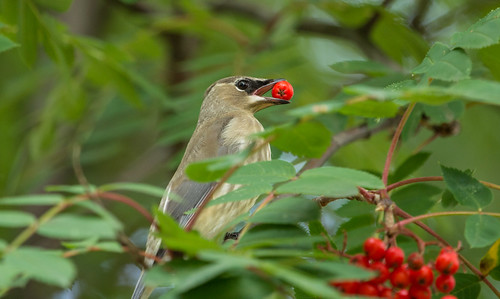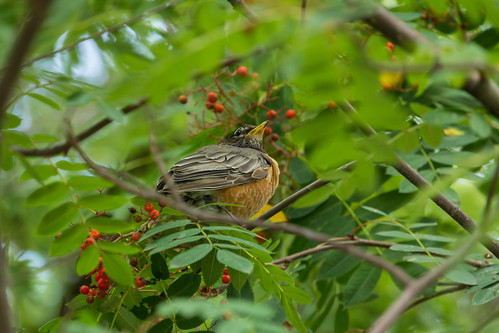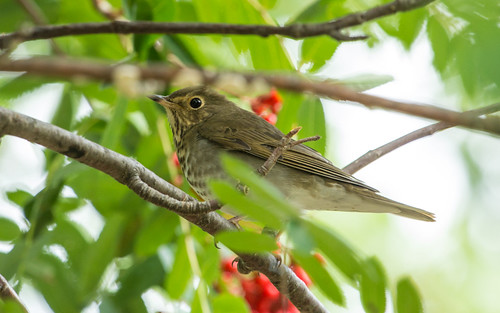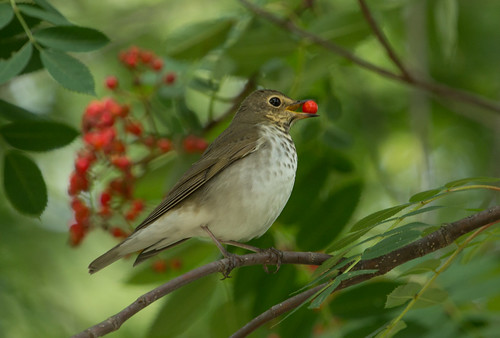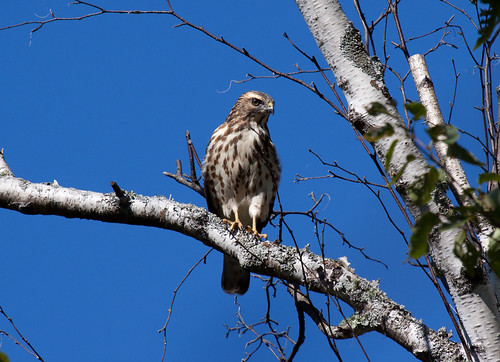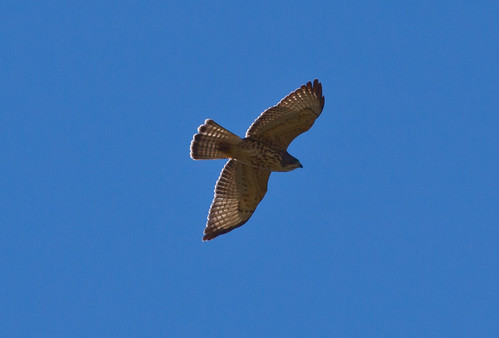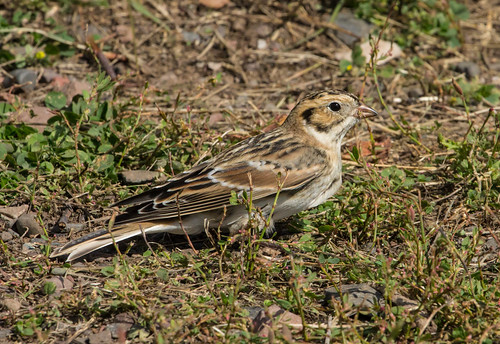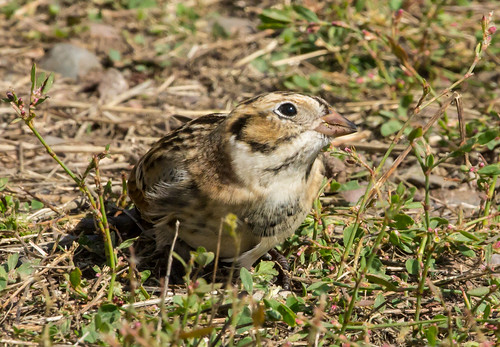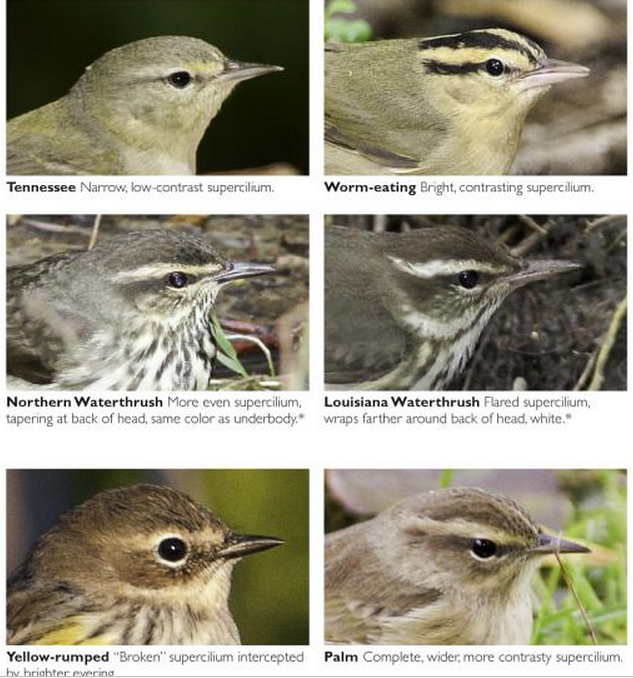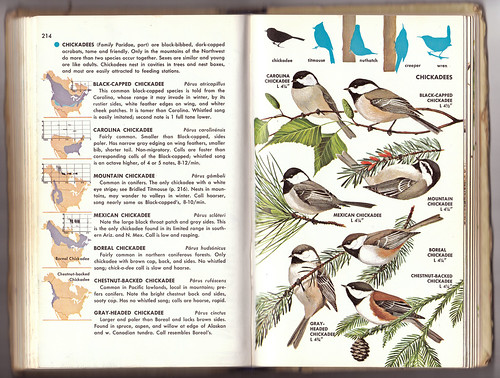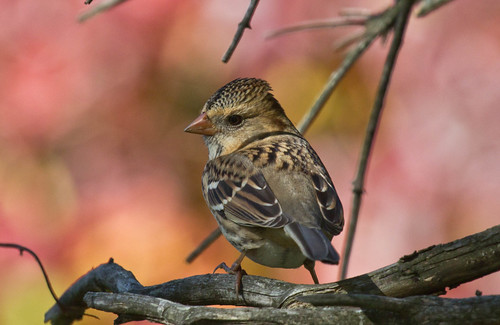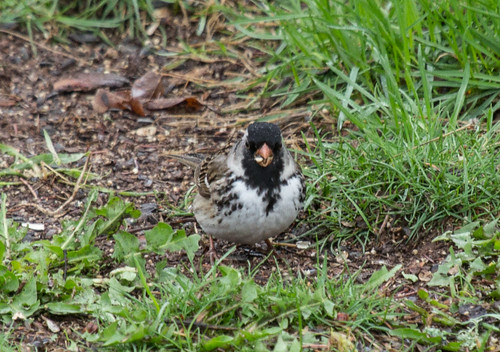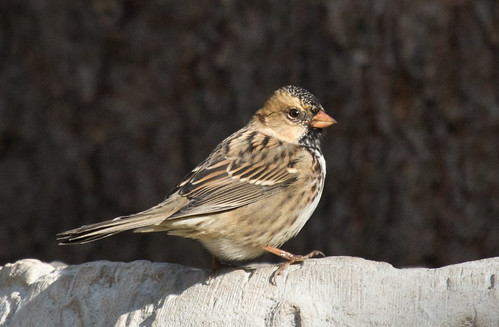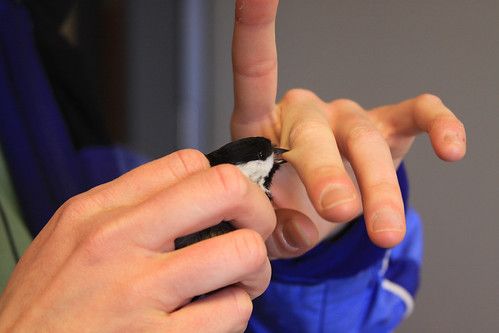
Last summer, the Princeton University Press released a book
by Tom Stephenson and Scott Whittle, The
Warbler Guide. When I first read about it, I admit I rolled my eyes
thinking, “Not another one!” My library already included four field guides
specifically about warblers. They’re all good in one way or another, but I don’t
usually consider field guides to families to be useful, especially for
beginners, because they don’t show similar but unrelated birds that can be
confusing. (The great comprehensive guides to families are a different story.) The
Peterson guide to warblers is wonderfully comprehensive, but even that one is
worthless in the field when someone is starting out and isn’t sure whether a
particular bird is a flycatcher, vireo, kinglet, or warbler. But it’s very true
that birders of all levels are drawn to warblers, and anything that makes
identifying them easier is a Good Thing, and the publishers sent me a free
copy, so I opened it. And WHOA! The
Warbler Guide is a game changer.
The 137-page section that starts the book is a brilliant
tutorial in the basics of warbler identification—both by sight and sound—using
a methodical, objective approach that would benefit anyone studying any group
of birds. It so thoroughly covers identification both by appearance and
vocalizations that I want to highlight the two sections separately.
Warbler Appearance
In their “Topographic Tour,” Stephenson and Whittle use
brilliant colors to outline different feather groups and body parts within a
nice color photo, rather than using a simple line to point out the general area
of what could be a large or small structure not so easy for beginners to figure
out. David Sibley in his Birding Basics used
black-and-white line drawings, and Kenn Kaufman in his Advanced Guide to Birding brought it to the next level with black
and white outlines next to actual photos to show the particular feather groups
and body parts, but Stephenson and Whittle bring this clear-minded approach to
the next level.

The 40-page section on things to pay attention to when
looking at warblers is rich in photos showing each feature on different species
and, where pertinent, on similar non-warblers. Bill shape and length, eye
rings, eye lines, length of the tail and how relatively long or short the
undertail coverts are—all these features and more are thoroughly covered, and
reading this section will make anyone more able to discern a bird’s important
features. The section is rich with photos clearly comparing and contrasting
each feature on different warblers and non-warblers. There is also a section on
aging and sexing warblers—and the authors show how this is fairly
straightforward with some species but virtually or completely impossible with
others. They use wonderful drawings by Catherine Hamilton to illustrate points
more clearly understood and compared with drawings than photos.

There are also nine two-page spreads called visual finders.
These pages are an absolute treasure, and are, amazingly, all available as free
PDF downloads on
The Warbler Guide website,
though I personally wish the publishers would also sell eastern and western
versions as laminated, folded guides. These visual finders show all the species
together so you can make a quick guess before thumbing through the species
pages. One shows all the warbler faces in profile, another the whole body in
profile, a third the side profile from a 45-degree angle, when we see more of
the underside and less of the upper body, and a fourth from directly beneath.
They repeat the full body profile views with another 2-page spread limited to
eastern species in spring, another for them in fall, and have a single 2-page
quick finder for western species. Finally, they use Catherine Hamilton’s
drawings to compare close-up views of the under-tails of every eastern and
every western species.
Of course, the meat of the book is in the 354-pages of
species accounts. These include a wide array of photos of each bird with
comparison photos of similar-appearing species, listing all the bird’s features
and highlighting with a check the features that in and of themselves are
diagnostic. For example, if all you can see on a warbler hidden by foliage is a
bit of its undertail, but notice black “arrowhead” markings on a white
background, you for certain are looking at a Black-and-white. Some
straightforward warblers, such as the Black-and-white, are covered in 6-pages,
while those with more plumages or which can be easily confused with others,
such as the Blackpoll, can have as many as 10, and the Yellow-rumped, which has
different plumages for eastern and western forms, is covered in 12 pages.
The Warbler Guide
is the perfect book for learning warbler plumages—stunningly beautiful, and fun
as well as instructive. And it goes above and beyond that, with the most
comprehensive coverage of warbler sounds I’ve ever seen.
Vocalizations
I absolutely love
The Warbler Guide's thorough coverage of visual identification. But the book is a game
changer in another way, too, providing the best tutorial in learning bird songs
and calls I’ve ever seen, with liberal use of spectrographs of sounds, called
sonagrams, throughout.
Many people find these graphs of sound scary and confusing.
My trusty Golden Guide, the field guide I used in the 1970s when I started birding,
is the only field guide I’ve ever seen that uses sonagrams.
I suspect that the reluctance
of people to figure them out kept other field guide authors from using them. I
intuitively grasped many of the concepts of sonagrams from the start, because I can read
music, but it would have been enormously helpful for me when I was starting out
to have read
The Warbler Guide’s
38-page tutorial, and also to have been able to see a lot of sonagrams for each
species, to better grasp the many different songs a single species can produce.
This tutorial explains how to go about learning warbler songs, interpreting the
sonagrams while listening to the exact corresponding sound via “The Warbler
Guide Song and Call Companion,” available as a download for $5.99 via
thewarblerguide.com.
I
downloaded the Companion, which has over 1,000 short sound files, and set it up
in iTunes to play each sound on repeat until I advanced it manually to the next
sound. Then I read the introductory section about learning warbler sounds while
sitting at my computer with iTunes open. This was the perfect way to get a
visceral appreciation of how to interpret the spectrographs of bird sounds, and
to get a far clearer, more objective understanding of what to listen for while
identifying bird sounds than what field guides traditionally show. Even if you
can’t afford the $30 Warbler Guide, I
strongly recommend checking it out of a library, paying the $6 to download the
songs, and doing that tutorial. Learning what to listen for on warbler songs
will make distinguishing the songs of other families much easier, too.
After the basic tutorial on how to listen to warblers comes
what the authors call their “Song Finder,” in which they group the sonagrams of
similar sounds together, so you can see the spectrographs and read their clear
explanations of the differences while you listen to the sounds.
After you’ve gone through that amazingly in-depth but
enjoyable tutorial, you can head straight to the individual species accounts.
Just as The Warbler Guide provides
visual comparisons for each bird, it provides sounds, too. The song treatment
is extraordinary, covering the different types of songs, call notes, and
nocturnal flight sounds for that species along with similar-sounding
vocalizations from other species—again, downloading that sound download
provides extraordinary in-depth coverage for each species. I would not
recommend trying to read and listen to the entire Warbler Guide: after the initial tutorial, I’d prioritize the
species by which you want to learn first.
I got a free review copy last year, but love the book so
much that I paid for a second copy when the authors were at the popular Ohio
birding festival, The Biggest Week in American Birding, this year, so I could get
it autographed.
Most of the early fall warblers have passed through the
north woods now, though as of September 15, there is still a good variety out
there. This would be an excellent time to start reading The Warbler Guide and listening to the companion guide while you
get more comfortable identifying Palms, Yellow-rumped, and whatever others are
still hanging out. And spend a rainy afternoon or evening on that tutorial at
the beginning. Then keep thumbing through those species accounts now and then throughout
the winter, and by next spring, you’ll be identifying warblers like a pro. You’ll
be so glad you did!
THE WARBLER GUIDE
Tom Stephenson & Scott Whittle
Drawings by Catherine Hamilton
Paper Flexibound | $29.95 / £19.95 | ISBN: 9780691154824
560 pp. | 6 x 8 1/2 | 1,000+ color illus. 50 maps.
eBook | ISBN: 9781400846863 (Available July 7, 2013)
Pub date: July 24, 2013
Also, what sounds like a great app for The Warbler Guide will be
coming out in time for Christmas. I can’t wait to see it!
Picky Picky Picky
Most of the warbler photos in The Warbler Guide were shot with flash. Based on my observations of
my education owl Archimedes when people take his picture in various lighting
situations, and on my observations of songbirds at various birding destinations
when photographers use flash, I don’t think flash bothers birds much, or even
at all, in daylight. But the bright dot or weird reflections in the birds’ pupils
on some of the photos did bother my aesthetic sensibilities. The most egregious
case was their photo used to illustrate a Canada Warbler’s eye ring. The weird
and large white reflection in the pupil could confuse beginners about what and where
the eye ring is—I wish they’d photoshopped that out. The Canada Warbler photo
they use to illustrate its bill size and shape would have been a better choice
for showing the eye ring. The fact that this is the only thing about this
entire wonderful guide that I take issue with is pretty darned impressive.

